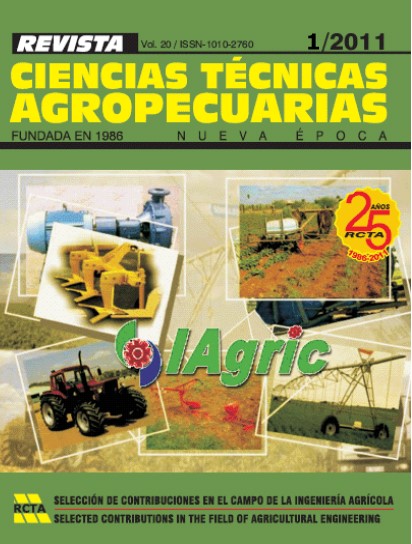Los Objetos de Aprendizaje en la carrera de Ingeniería Agrícola: modalidad semipresencial
Main Article Content
Resumo
De las innovaciones tecnológicas más significativas de los últimos años, sin duda Internet tiene el potencial de producir un cambio de paradigma en el modo en el que las personas se educan. Por ello, repercute en el modo en que se deben, preparar los materiales educativos para ponerlos a disposición en la comunidad universitaria. En la actualidad se comienza a vislumbrar que los Objetos de Aprendizajes (OA) son especialmente atractivos para el mundo digital y por ende para la educación virtual. De ahí su importancia en las carreras agropecuarias cubanas especialmente en la de Ingeniería Agrícola, teniendo en cuenta los nuevos retos de la Nueva Universidad Cubana. Las exigencias en la elaboración de OA, permitirá que los contenidos que se elaboren para dicha carrera puedan soportarse correctamente en correspondencia con los estándares establecidos internacionalmente y estos puedan ser catalogados, clasificados e indizados sin dificultad alguna.
Article Details
Aquellos autores/as que tengan publicaciones con esta revista, aceptan los términos siguientes:
- Los autores/as conservarán sus derechos de autor y garantizarán a la revista el derecho de primera publicación de su obra, el cuál estará simultáneamente sujeto a la Licencia Creative Commons Attribution-NonCommercial 4.0 International (CC BY-NC 4.0) que permite a terceros compartir la obra siempre que se indique su autor y su primera publicación esta revista. Bajo esta licencia el autor será libre de:
- Compartir — copiar y redistribuir el material en cualquier medio o formato
- Adaptar — remezclar, transformar y crear a partir del material
- El licenciador no puede revocar estas libertades mientras cumpla con los términos de la licencia
Bajo las siguientes condiciones:
- Reconocimiento — Debe reconocer adecuadamente la autoría, proporcionar un enlace a la licencia e indicar si se han realizado cambios. Puede hacerlo de cualquier manera razonable, pero no de una manera que sugiera que tiene el apoyo del licenciador o lo recibe por el uso que hace.
- NoComercial — No puede utilizar el material para una finalidad comercial.
- No hay restricciones adicionales — No puede aplicar términos legales o medidas tecnológicas que legalmente restrinjan realizar aquello que la licencia permite.
- Los autores/as podrán adoptar otros acuerdos de licencia no exclusiva de distribución de la versión de la obra publicada (p. ej.: depositarla en un archivo telemático institucional o publicarla en un volumen monográfico) siempre que se indique la publicación inicial en esta revista.
- Se permite y recomienda a los autores/as difundir su obra a través de Internet (p. ej.: en archivos telemáticos institucionales o en su página web) antes y durante el proceso de envío, lo cual puede producir intercambios interesantes y aumentar las citas de la obra publicada. (Véase El efecto del acceso abierto).
